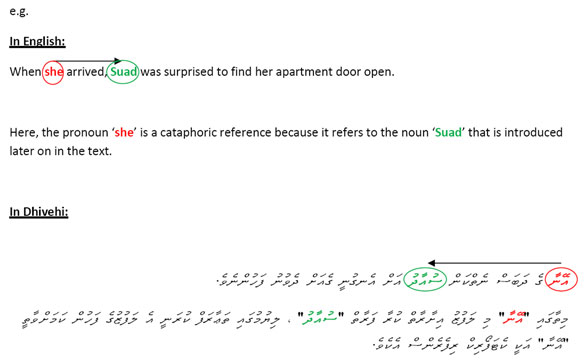Look carefully at the following sentences :
Well, Raheema was the woman to whom it happened. So it is highly unlikely that Usman is a carpenter. Furthermore, the crow is black. Therefore anyone in the room could have been the culprit.
Many cohesive devices are used correctly here,
However, it is not clear how the sequence makes sense (at least not from the piece of the discourse available here)
Formal links such as cohesive devices are therefore obviously not enough to make a stretch of language discourse.
Below are 4 possible answers to the sentence: “The baby is crying.â€Â
1. Complete that letter.
2. Don’t worry.
3. I need to finish this by tomorrow.
4. Oh my God! It’s past 10!
Can you think of a situation where each of these would make perfect sense on its own?
Why is it that the exchanges made sense although there are no formal links?
Each of them could form a complete discourse!
Imagine the following situation:
As you approach the lift, you see a classmate standing near it, holding a huge bundle of books with both hands. When you reach her she says:
Sorry dear. I knew you were coming this way. Need to take these to the fourth floor. Faruhad is waiting in his room.
Would you have any trouble in interpreting what she said? Why?
Why did this stretch of language make sense even without a single cohesive device?
The meaning of a piece of language beyond its literal, formal meaning – i.e what the speaker intends to achieve through it is its function.
Language has macro functions and micro functions.
Macro functions are the main functions of language.
In order to determine the macro-functions of language, many linguists have identified the elements of communication. The (most commonly referred to) elements of communication are:
– The addresser: person who originates the message – usually the one who sends the message (but not always – e.g. messengers, spokespersons)
– The addressee: person to whom the message is addressed – usually the one who receives message (but not always – e.g. eavesdropping)
– The channel: medium through which message travels (e.g. telephone wires, sound waves, marks on paper …)
– The message form: particular grammatical/lexical choices of the message
– The topic: information carried in the message
– The code: language or dialect
– The setting: social/physical context
Each macro-function focuses attention upon one of the above elements.
The macro-functions of language are:
The emotive function – communicating emotions and inner states of the addresser
e.g. wow!
brilliant!
shit!
The directive function – seeking to affect the behaviour of the addressee
e.g. please pay attention
stop that!
I’m warning you!
The phatic function – opening/checking the channel (for social/practical reasons)
e.g. have we met before?
are you married?
hello?
can you hear me at the back?
The poetic function – the form is crucial to the message
e.g. BEANZ MEANZ HEINZ
The referential function – convey information
e.g. your class test is tomorrow
your fly is open
that’s her husband
The metalinguistic function – focusing on the code (for clarity/renegotiation)
e.g. What is the meaning of this word here?
These type of cohesive devices are called conjunctions
The contextual function – creating particular kind of communication
e.g. shall we begin the interview now?
everyone should take part in the role play

